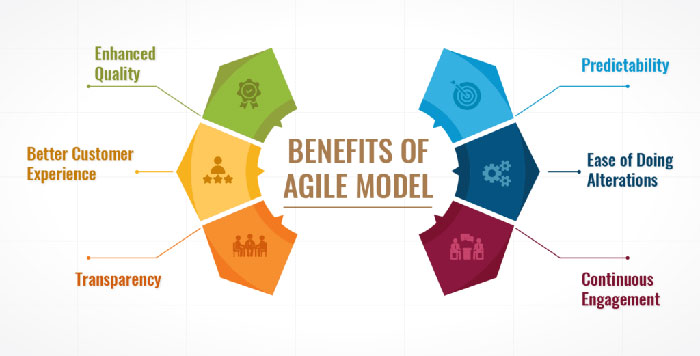Agile Explained for Management
 Source: https://www.mindcypress.com/benefits-of-agile-training-and-best-courses/
Source: https://www.mindcypress.com/benefits-of-agile-training-and-best-courses/
Agile product (or project) development has proven beneficial compared to classic waterfall approaches, at least when technology and/or requirements are not known in advance in every detail (complicated or complex environments).
For instance, with agile approaches the product development can be tested faster by real customers. This early customer feedback can lead to an overall better customer experience and satisfaction, and ultimately, more revenues. Another positive factor is increased transparency throughout the entire product development process, where problems and bottlenecks can be identified and ideally removed. At the end this leads to more speed and quality in the product development. And there are more benefits as improved predictability, increased product quality continuous engagement, etc.
However, management is normally not so deeply involved with complex product development processes. Therefore, whether approach A or B is applied is not relevant in their thinking. Most of the time - business as usual - the final success of the project or the product development is all that counts. Unfortunately, in a fast moving and complexity-growing world, the approach is key for success. Nevertheless, there is one striking argument towards agile approaches that is to my mind most of the time not communicated in a clear and concise manner: Small releasable iterations for real customers have the crucial advantage that there is a minimum amount of "bound" capital. As opposed if there is a waterfall approach in place, the "bound" capital could be relatively enormous depending on the needed development time and the used resources. If you release to the market in short cycles, management has the "security" that the spent money is actually in use for the market at this very moment. Nowadays, the (agile) approach and the right communication of this is one key to success.
Feedback
Back to top